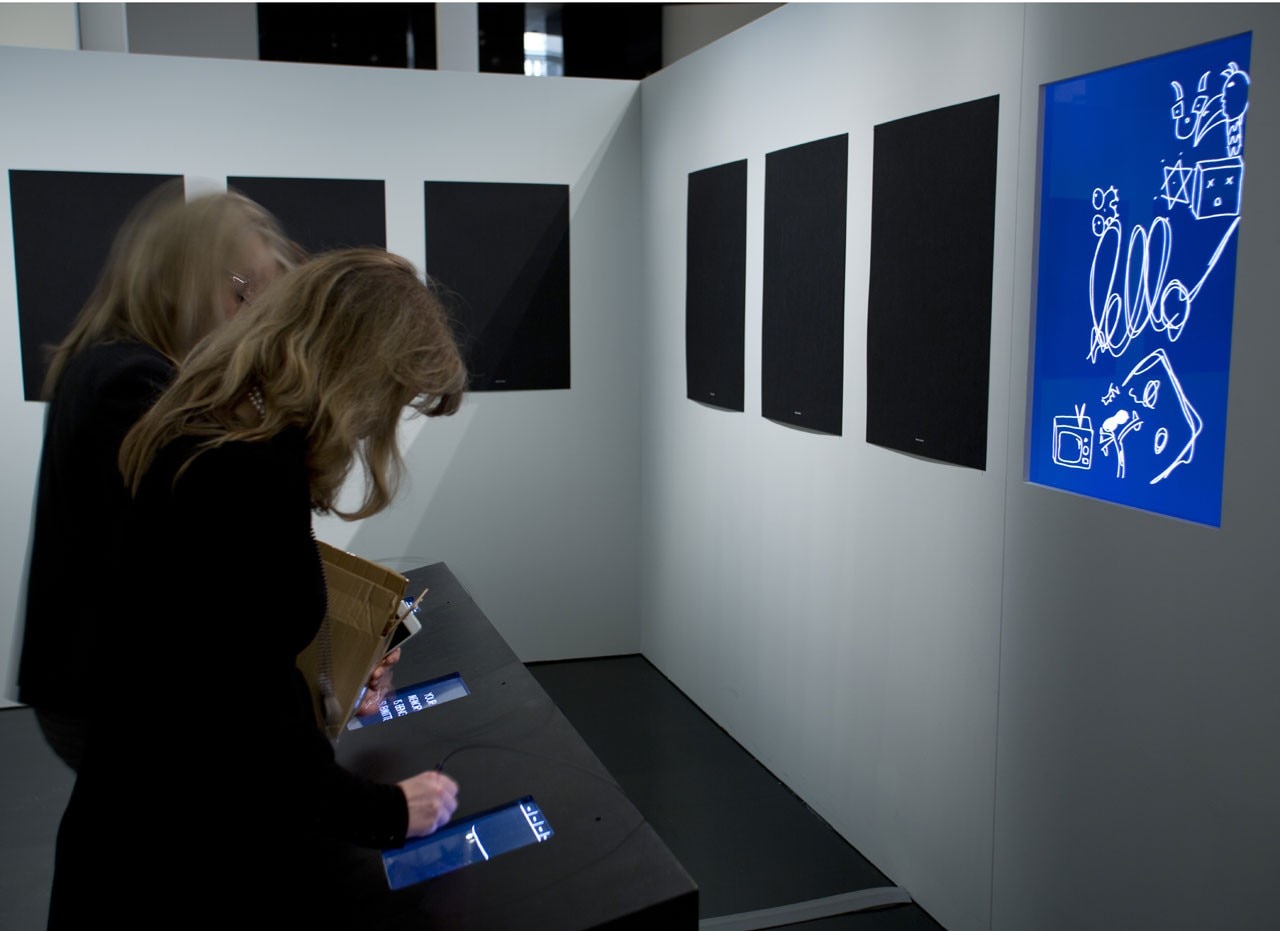
They commissioned the author Hari Kunzru to produce a 10,000 word novella and invited twenty international graphic designers, illustrators and typographers, including Åbäke, Le Gun, Erik Kessels and Luke Pearson, to respond to selected extracts.
The aim was to create a multi-dimensional, walk-in story that updates the book at a time when digital publishing is challenging its physica existence and changing the roles of authors, readers, designers and illustrators alike.

Kunzru’s previous novels have addressed issues of identity in global empires – be they of countries or corporations - and Memory Palace continues this theme. The London-based novelist has offered up a dystopian vision of the city several hundred years in the future. A great storm, called The Magnetization, has erased the world’s information infrastructure.
It has been followed by The Withering, whose tyrannical ruling class - The Thing - aims to destroy memory and all means for its recording, including writing, collecting and art, and replace it with The Wilding, a technology-free society in which man will live in harmony with nature.
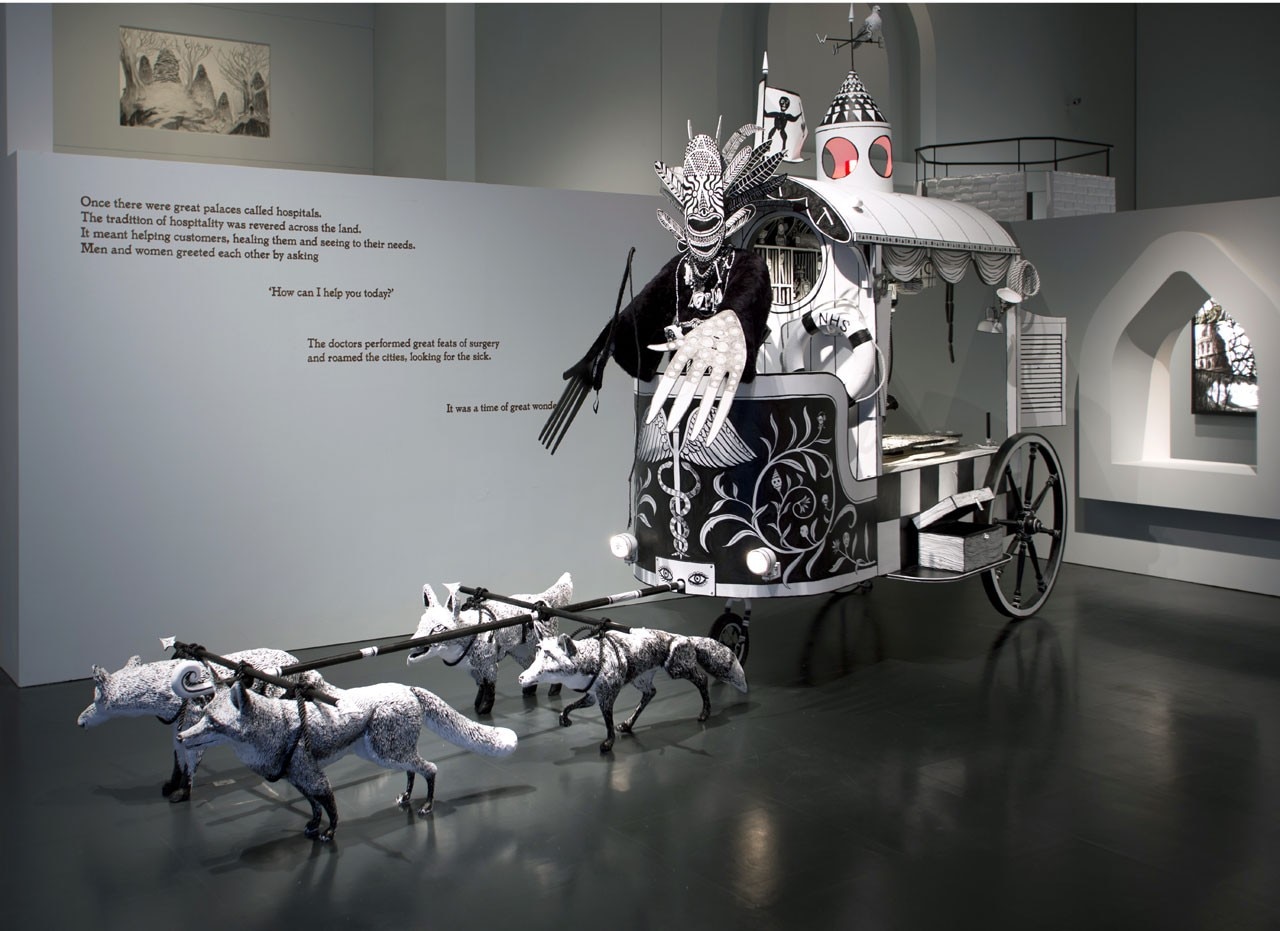
Resisting this policy are the Memorialists, a banned group who attempt to keep the art of memory alive and who include the story’s unnamed narrator. Imprisoned for his recollective transgressions, he uses his cell to create a memory palace, a mnemonic device dating back to Classical civilisation in which a building is visualised and its imagined contents act as triggers for recollection.
The visitor is charged with piecing together this complex narrative through the combination of word and image that make up the exhibition. The former consist of extracts from the text, writ large on the gallery walls in rusty, William Morris-inspired copper letters created by Sara De Bondt studio.
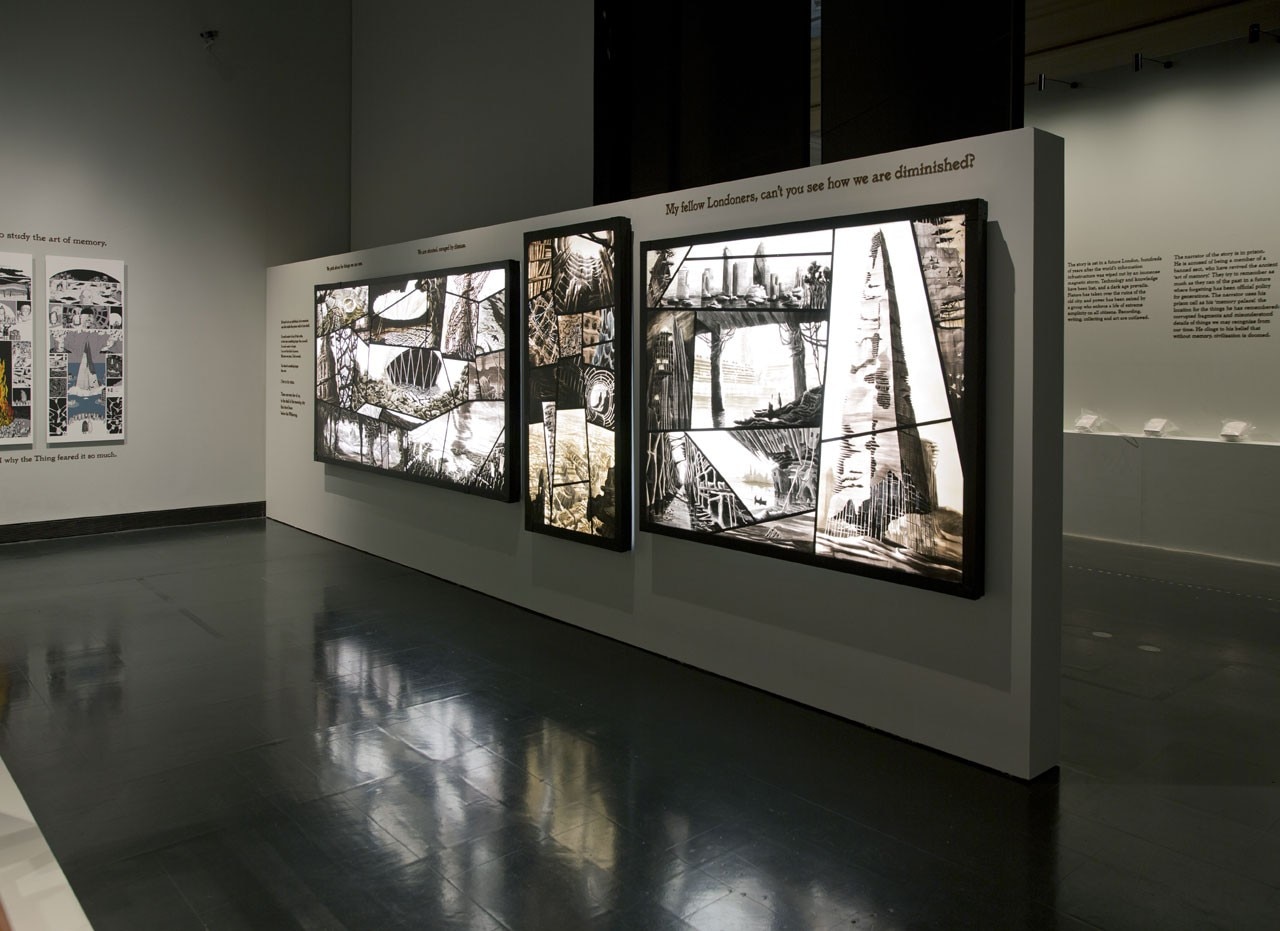
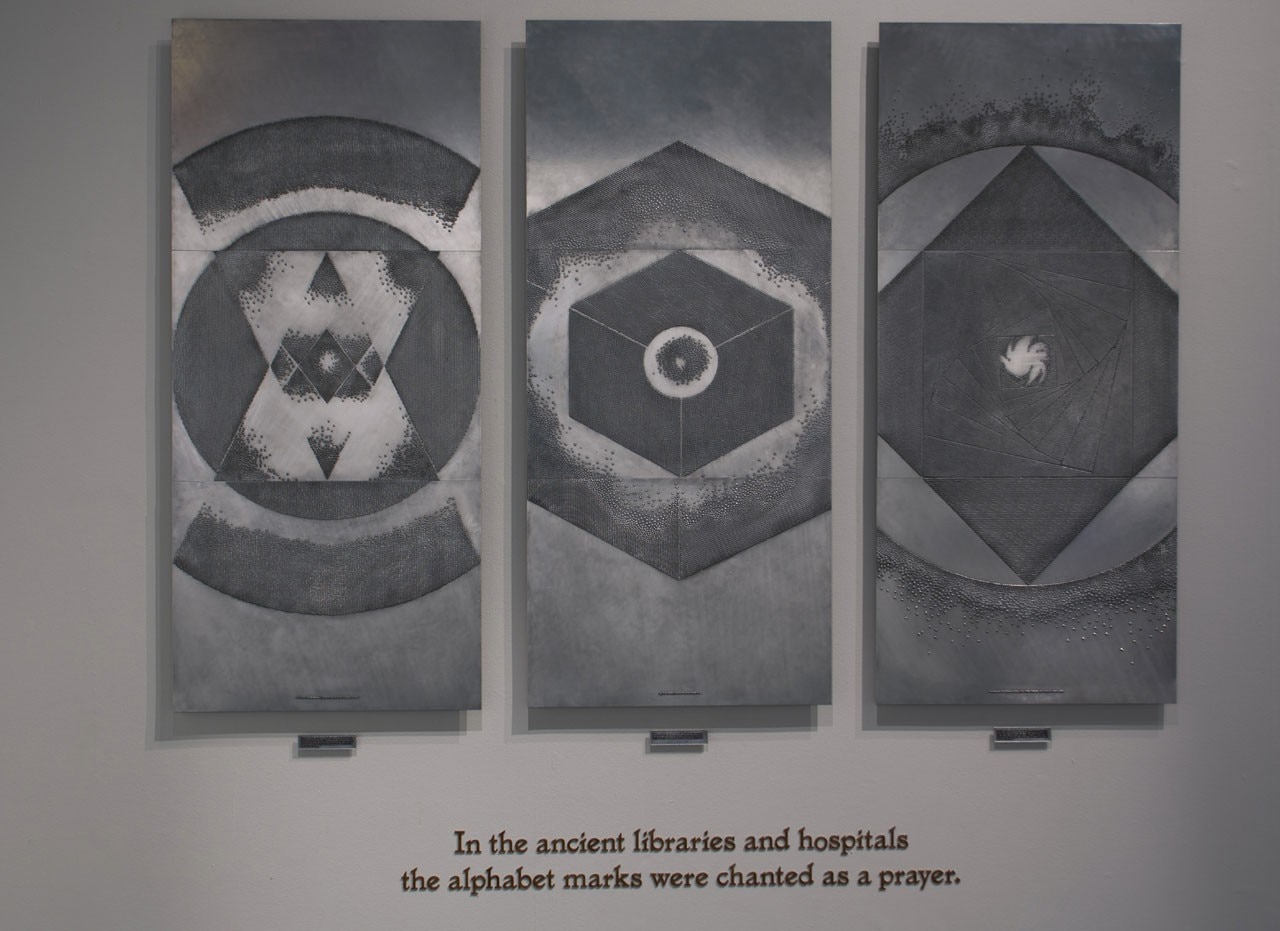
Illustrator Frank Laws has created the prison, a high walled cell in which the narrator has created his memory palace. Also in this section is the London-based graphic design collective Åbäke whose cabinet of curiosities includes remnants of past “tricknology” (technology) whose functions have been long forgotten – a reflection on the value of collecting objects that fits well in the Museum context.
The second room continues this theme of forgetting and mis-remembering the past. Echoing the religious air of Tral’s print is Stuart Kolakovic’s medieval-esque altarpiece, dedicated to long-gone scientists such as “Lady Ayn Stein, who wrote the laws of relativity'.
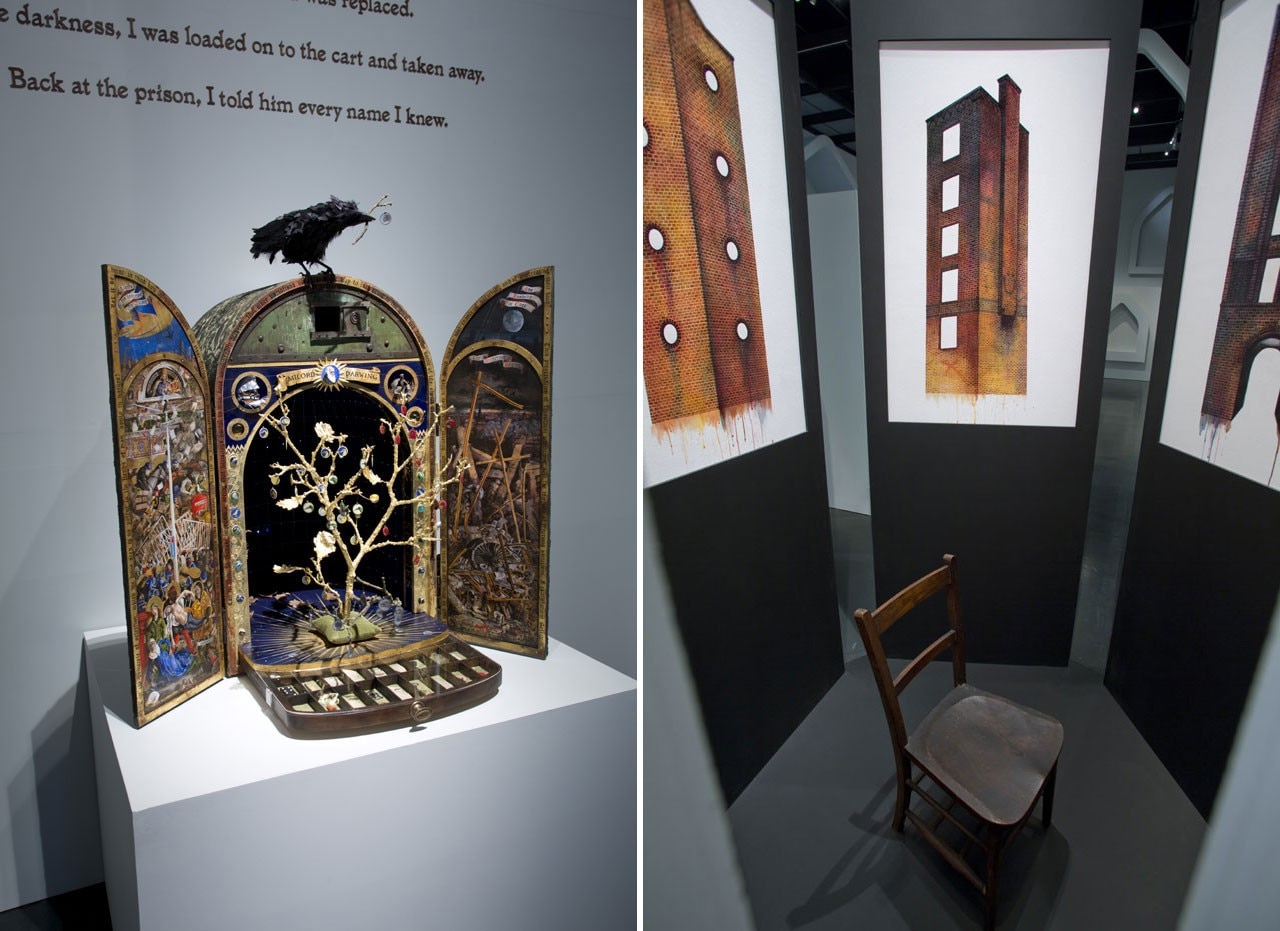
Adjacent is one of the largest and most arresting works included, a multimedia fox-drawn “ambulance” created by illustration collective Le Gun’s whose shamanic doctor and miracle cures act as a cautionary tale on the current destruction of Britain’s National Health Service.
As with other dystopian fiction, such as George Orwell’s Nineteen Eighty-Four (which is referenced in several ways here) Memory Palace uses a future setting to talk about the present. It is a savage depiction of our post-crash society that takes issues with contemporary social mores – be they our reverence for recycling, as in Erik Kessels newspaper palace, or our enslavement to digital technology – a reliance that Johnny Kelly plays on in his memory bank, the final piece in the exhibition, which allows the visitor to choose one memory to keep.
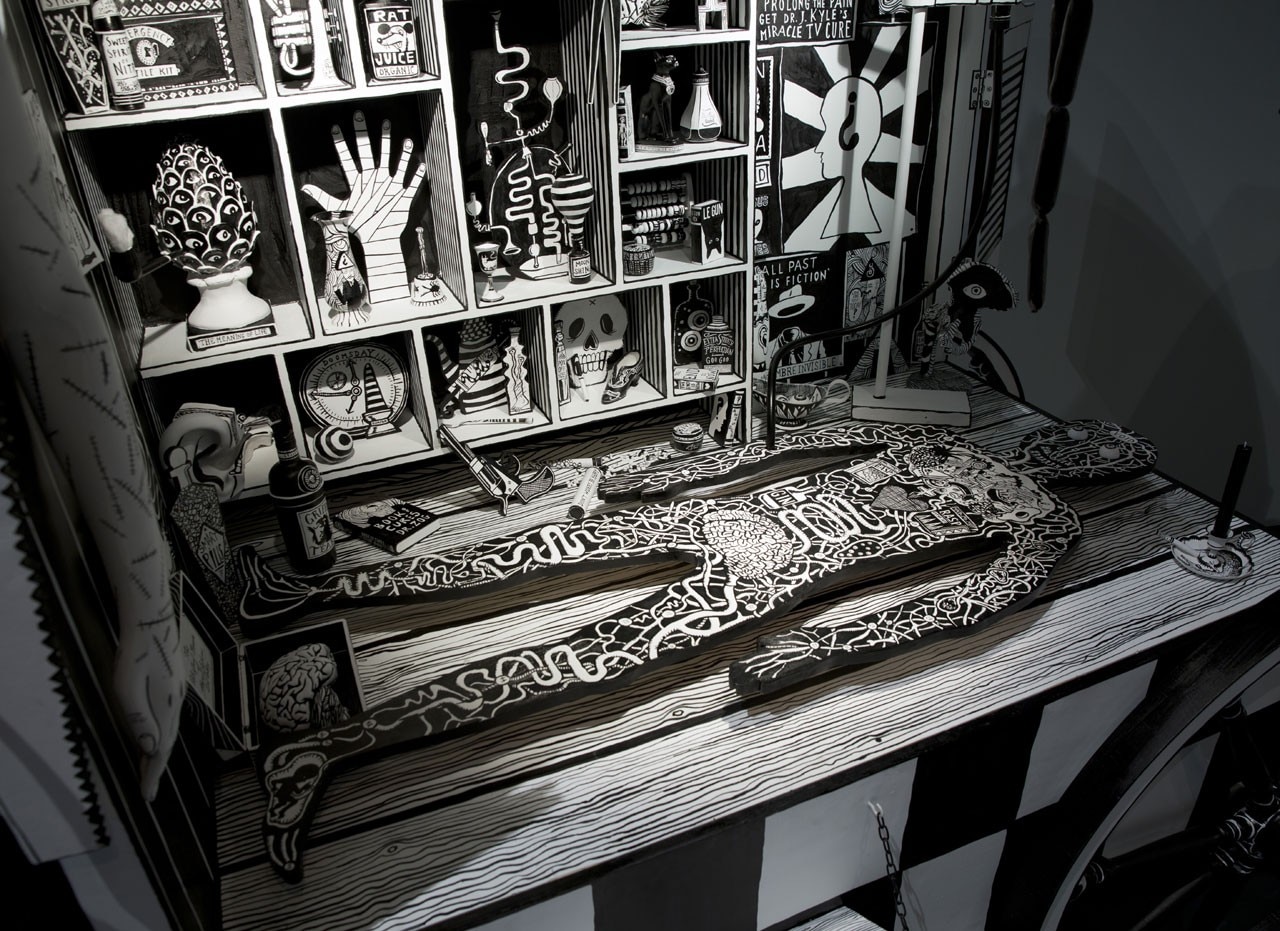
The exhibition isn’t entirely successful - I didn’t find the public experience of the exhibition as immersive as the solitary one of reading a book, and the suggestion that the visitor is free to experience the story in whichever order they wish is hampered by the story’s linear nature. The complex narrative and continual switch between word and image makes for a demanding experience, but it is rewarding: Kunzru’s story is a thought-provoking allegory that demonstrates the importance of storytelling, whatever medium it takes place in.
This interplay between different media is the most successful element of Memory Palace, adding a sensorial richness absent in most novel and speaking of the vitality of graphic design and illustration, areas of creativity all too rarely the subject of exhibitions at the V&A or elsewhere.
